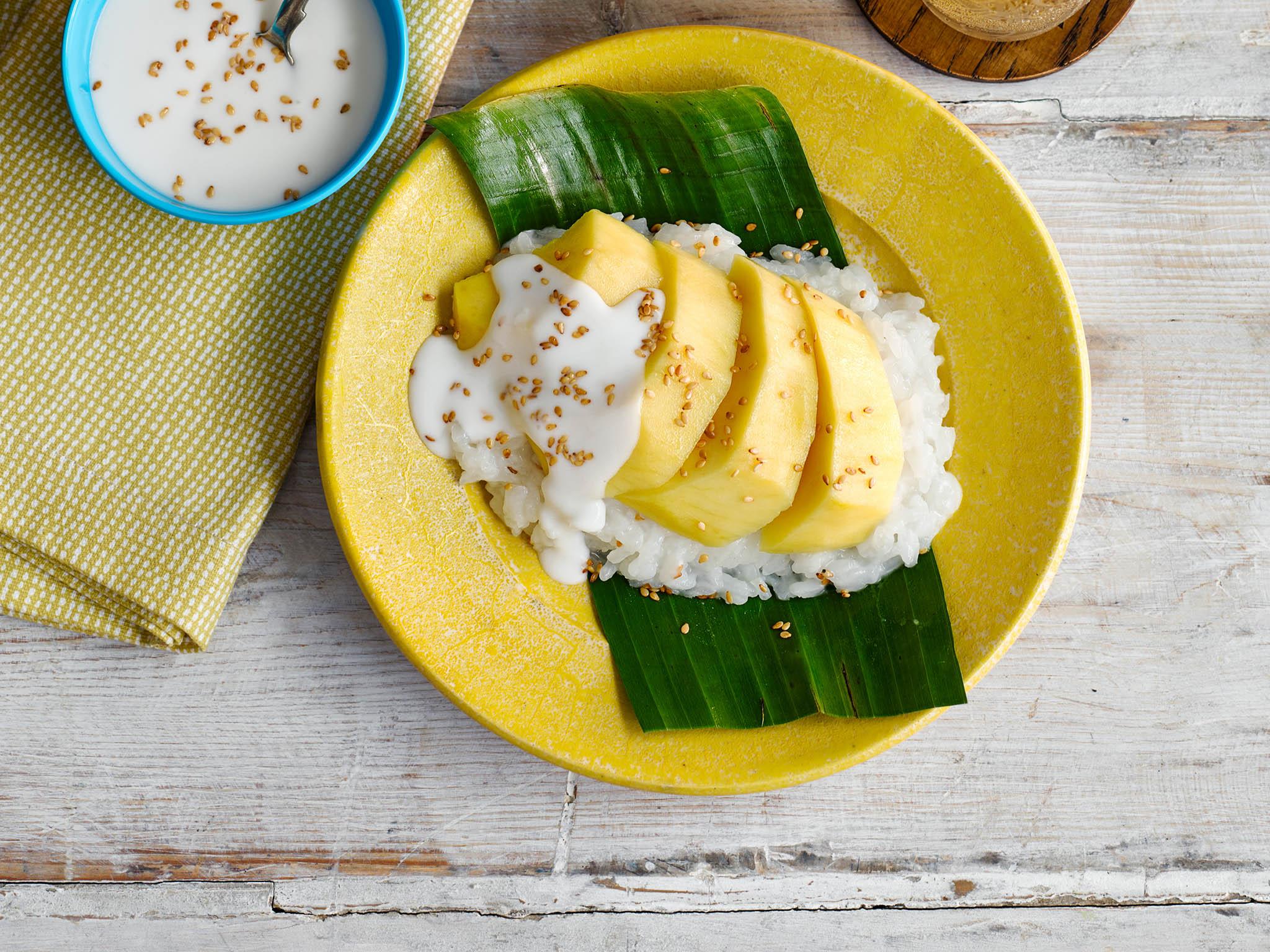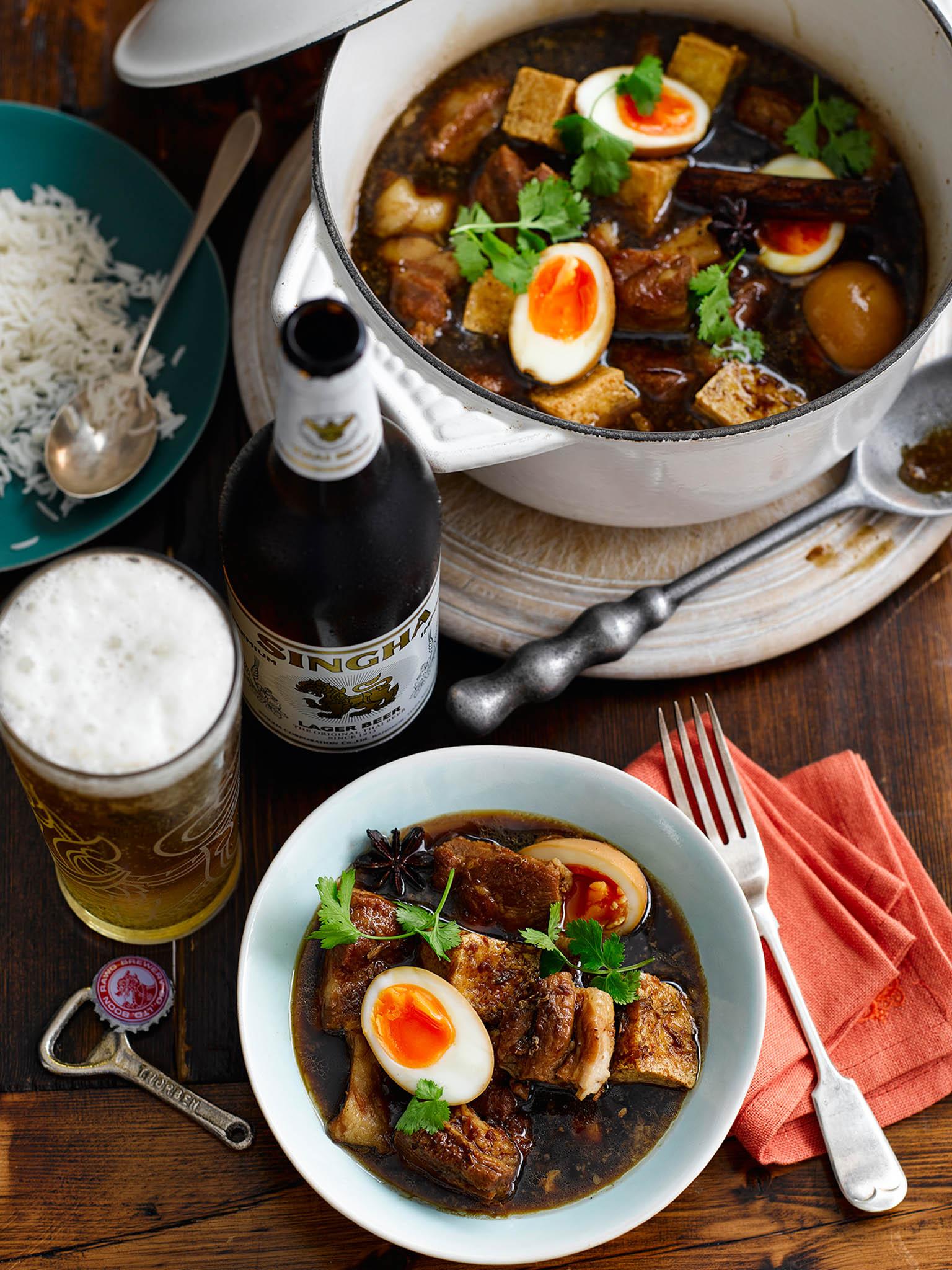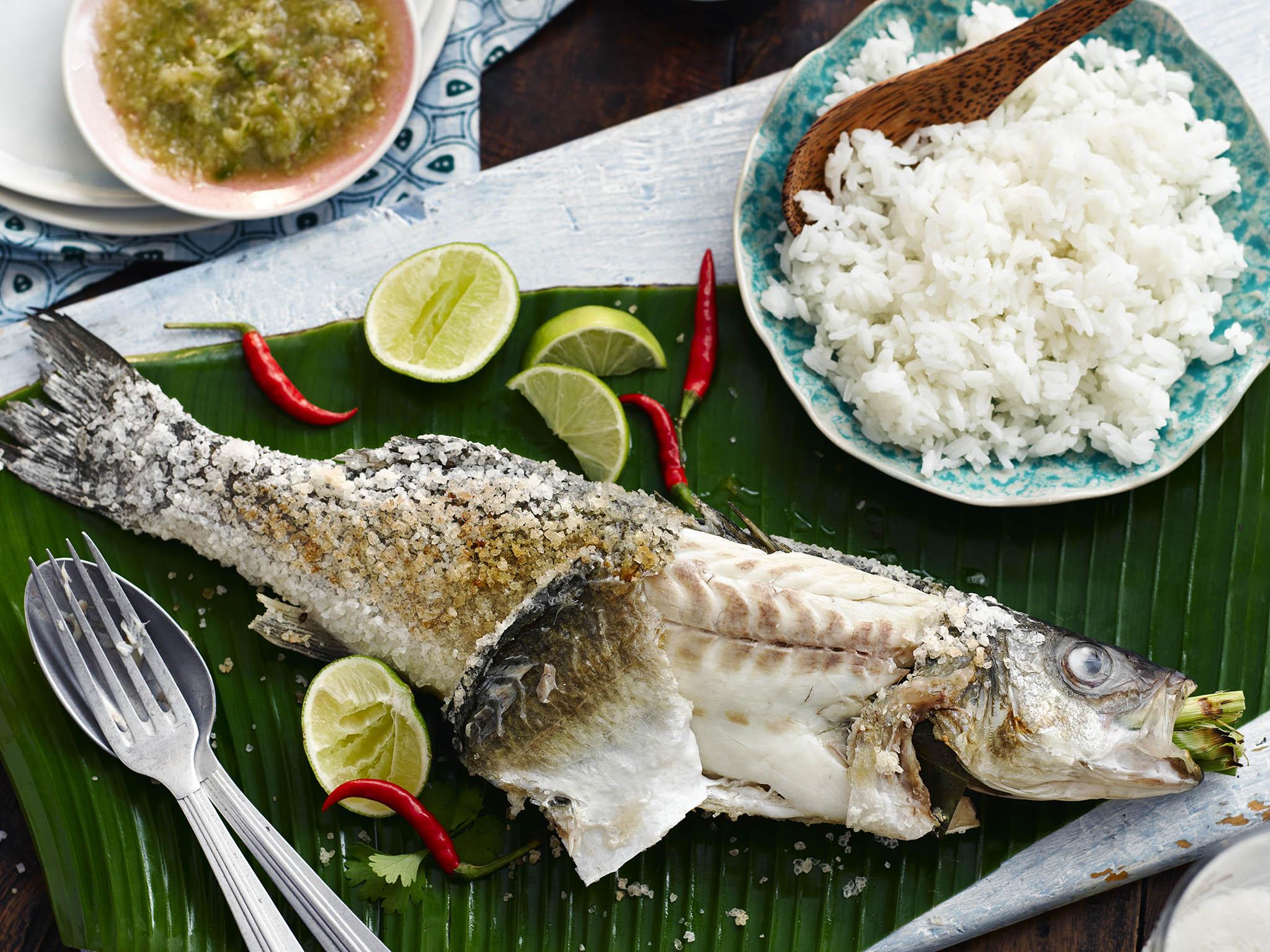Christmas three ways: How to have a Thai festive feast
As part of our Christmas Three Ways series, chef Andy Oliver shares Thai recipes

Your support helps us to tell the story
From reproductive rights to climate change to Big Tech, The Independent is on the ground when the story is developing. Whether it's investigating the financials of Elon Musk's pro-Trump PAC or producing our latest documentary, 'The A Word', which shines a light on the American women fighting for reproductive rights, we know how important it is to parse out the facts from the messaging.
At such a critical moment in US history, we need reporters on the ground. Your donation allows us to keep sending journalists to speak to both sides of the story.
The Independent is trusted by Americans across the entire political spectrum. And unlike many other quality news outlets, we choose not to lock Americans out of our reporting and analysis with paywalls. We believe quality journalism should be available to everyone, paid for by those who can afford it.
Your support makes all the difference.Mango and sticky rice, made with fresh coconut cream
This is a classic Thai dish and making it with fresh coconut cream makes all the difference. The dessert uses pandanus leaf, which is kind of the vanilla pod of Asia. They are best fresh so search them out at an Asian supermarket. If fresh isn’t available you can sometimes find them in the freezer section.
Serves 4
For the fresh coconut cream:
5 coconuts
2 pandanus leaves
1ltr water
For the sweet rice and mango:
200g sticky rice, soaked for 5 hours in cold water
1 pandanus leaf, optional
125ml rich coconut cream
100g white caster sugar
1 tsp sea salt
2 ripe mangoes (ideally yellow Thai ones)
For the sweetened coconut cream:
100ml coconut cream
1 tsp rice flour, mixed with a little water or coconut cream to form a paste
Pinch of sea salt
2 tbsp white sugar, or to taste
1 tbsp sesame seeds, lightly toasted
First make the coconut cream. Put water in a pan and bring it almost to the boil, add the pandanus leaves (tied in a knot). Crack the coconuts and prise the flesh from the shells, peel the dark skin from the outside of the coconut meat. Chop the coconut flesh roughly and add to a blender. Pour hot water over the coconut flesh, removing and discarding the pandanus leaves. Blend the coconut flesh and hot water until the flesh is chopped very fine (you can use a stick blender for this if you prefer). Now squeeze the contents of the blender in a clean tea towel over a bowl until all the liquid is extracted. Discard the pulp. Allow the coconut liquid to sit in the bowl in the fridge for 20 mins before removing and skimming the thick coconut cream from the top. Set aside to use later.
To make the mango and sticky rice: first wash the rice, and then soak in cold water for 4-5 hours. Drain the rice and place in a heatproof bowl and steam over a medium heat for about 30 mins. Meanwhile, to make the sweetened coconut cream, place the coconut cream, salt and pandanus leaf in a small saucepan over low heat and sprinkle in the rice flour while whisking continuously. Heat the mixture to a simmer and cook until thickened (a few mins) then add the sugar and stir until well combined. Remove from the heat and cool, set aside for later.
To make the sweet rice: mix the coconut cream, sugar and salt in a bowl and stir until the sugar and salt have dissolved. When rice is cooked, remove from steamer and place into a bowl. While still hot, pour the sweet coconut liquid over the rice and stir to combine well, then cover and set aside in a warm place for 15 mins to absorb. To assemble, peel the mangos and cut into elegant slices. Add the rice to each of your serving bowls, top with slices of mango and garnish with sweetened coconut cream and a sprinkle of toasted sesame seeds.

Pork belly braised in 5 spice broth with soft cooked egg and fried tofu
This delicious dish is often found at street stalls in Thailand. It's dark and rich, a bit salty and sweet and full of flavour from the spices.
Serves 6
1.5kg of good quality pork belly, cut into 2 inch chunks
2 tbsp table salt
For the spice powder:
Two 4 inch sticks of cassia bark (or cinnamon)
6 star anise
10 cloves
1 tsp coriander seeds
1 tsp fennel seeds
For the paste:
20 white peppercorns
A 2 inch piece of peeled ginger
5 coriander roots
5 cloves of garlic
For the braise:
3 tbsp sunflower or other plain oil
1.5 ltr chicken stock
50g palm sugar
4 tbsp fish sauce
3 tbsp oyster sauce
2 tbsp kecap manis (Indonesian sweet sweet soy sauce) or ordinary soy sauce with dark sugar or molasses
300g block of firm tofu
Oil to deep fry
6 soft boiled eggs
Coriander leaves to garnish
First make the spice paste. Dry roast the spices in a frying pan (no oil) over a medium heat until fragrant and toasted. Allow to cool. Now hold back one toasted stick of cinnamon and 2 star anise, transfer the rest to a spice grinder and grind to a fine powder.
Pound the white peppercorns in a pestle and mortar into a rough powder then add the ginger, coriander roots and garlic and pound into a coarse paste. Set aside.
For the braise, add the pork belly chunks to a large pan and cover with cold water. Place on high heat and add the salt. When the pot boils drain the pork (throwing away the liquid) and wash under cold water. Set aside for later. Now in a heavy-based pan place on a medium heat add the oil, when hot add the pounded paste, fry until light golden and fragrant. Now add the spice powder and fry for 30 more secs, before adding the chicken stock, sugar, fish sauce, oyster sauce, sweetened soy sauce or kecap manis and bring to the boil.
When boiling, add the blanched pork and reserved whole cinnamon stick and star anise. Turn down to a gentle simmer. Cook the pork gently on the stove for around 1.5 hours or until the pork is tender but the pieces are still holding together. While the pork is braising cut the tofu into 1-inch cubes and deep fry until golden. Set aside. When the braise is ready, turn off the heat add the fried tofu and soft cooked eggs, allow to sit for 15 mins so they can absorb the flavours. Serve garnished with coriander leaves.

Salt crust fish stuffed with lemongrass and served with dipping sauce
Serves 2 - 4 as part of a shared Thai meal
1 whole seabass (600g), gutted and scaled but fins and tail left on
2 lemongrass stalks
3-4 kaffir lime leaves (fresh or frozen, rather than dried)
1 pandanus leaf (optional)
250g of coarse sea salt
2 tbsp of rice flour or corn flour
1-2 tbsp of water
1 bamboo skewer to pin
1 banana leaf for presentation (optional)
For the dipping sauce:
3 coriander roots or stalks
4 cloves of garlic
5 green bird eye chillies
1 thin (5mm) slice of galangal (optional)
3 tbsp lime juice
3 tbsp fish sauce
1 tbsp golden or white caster sugar
Juice of one mandarin or tangerine (optional)
Stuff the seabass cavity with lemongrass, pandanus leaf and kaffir lime leaves, (you can even poke some lemongrass out through its mouth if you like) and pin closed with skewer. In a bowl, make a fairly thick paste by mixing the rice flour (or corn flour) with 2 tablespoons of water
Rub the skin of the fish on one side with the paste then pour over the salt generously, patting it down to stick. Leave for 5 mins, turn over the fish and then repeat the paste and salt on the other side. Grill fish on a medium temperature BBQ for around 6-8 minutes on each side or until cooked. You can use a griddle pan to do this if you don't have a BBQ.
In the mean time, make the dipping sauce by pounding the coriander roots or stalks, garlic, chillies and galangal (if using) in a pestle and mortar until fairly smooth, then mix in the lime, fish sauce and sugar (plus mandarin juice if using). Serve the fish on the banana leaf with a small bowl of the dipping sauce along side.
Singha worked with Andy Oliver, the chef behind the critically acclaimed East London restaurant Som Saa, to create these authentic Thai recipes
Join our commenting forum
Join thought-provoking conversations, follow other Independent readers and see their replies
Comments